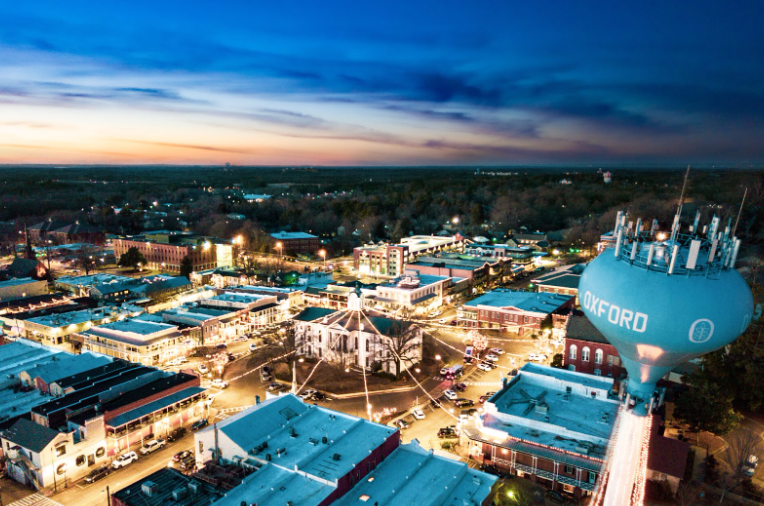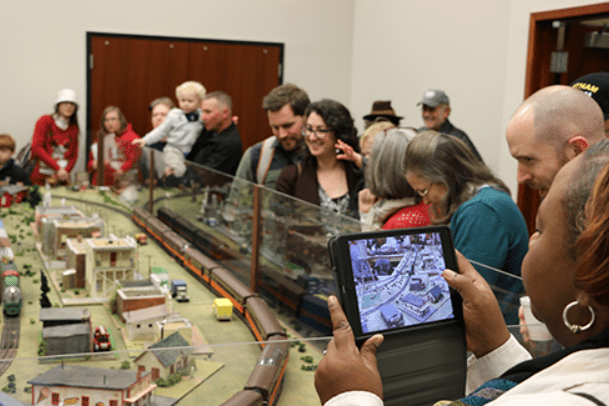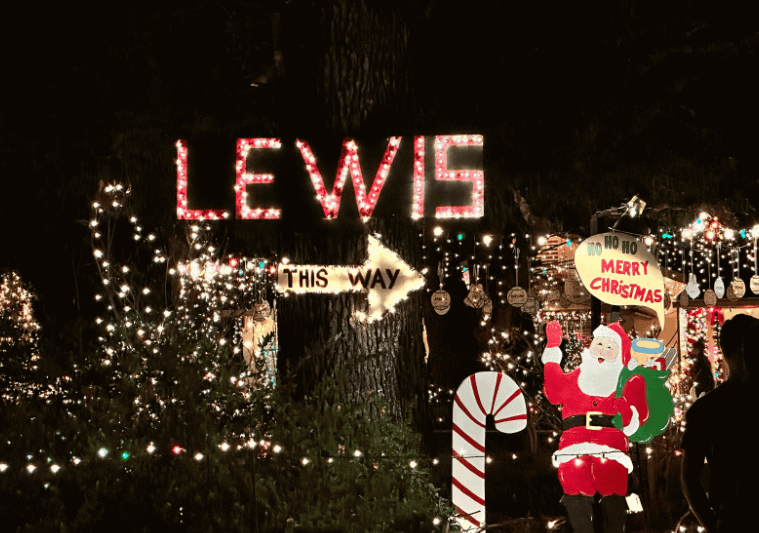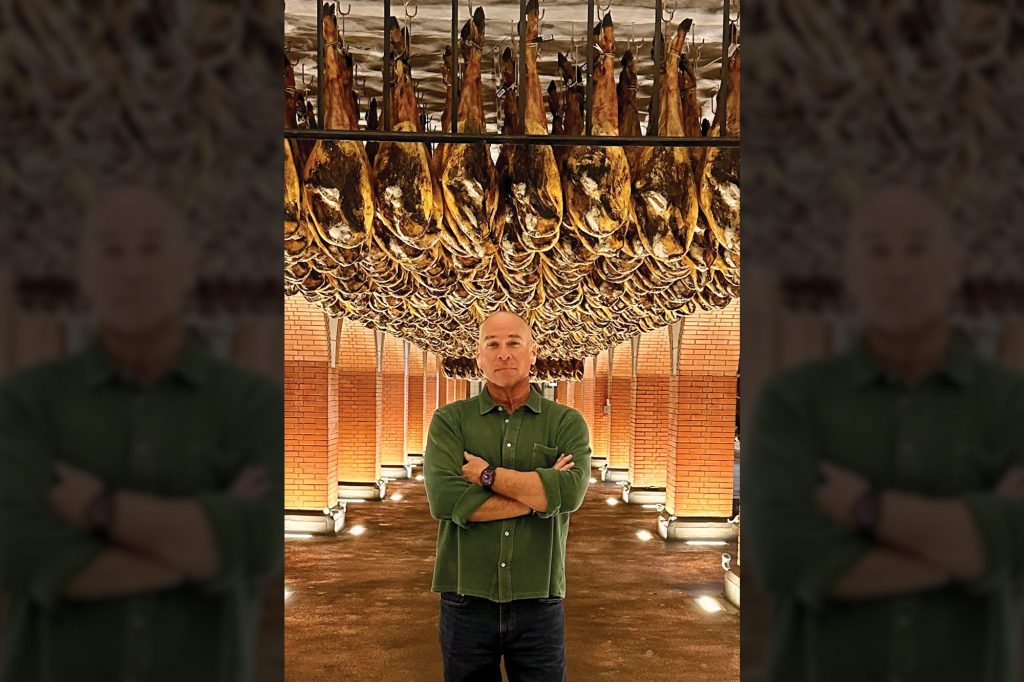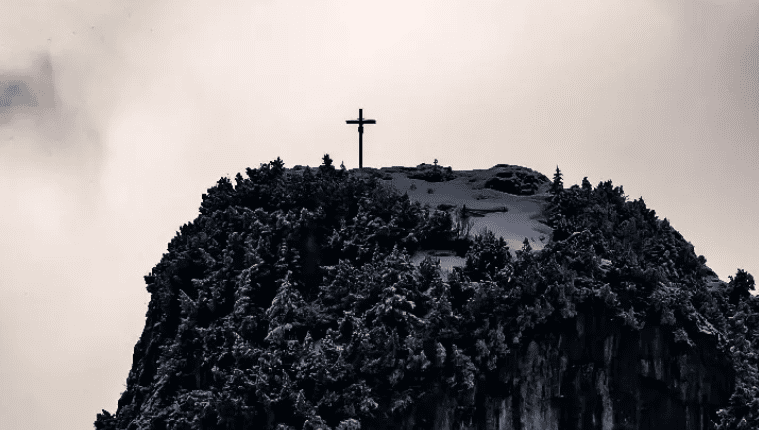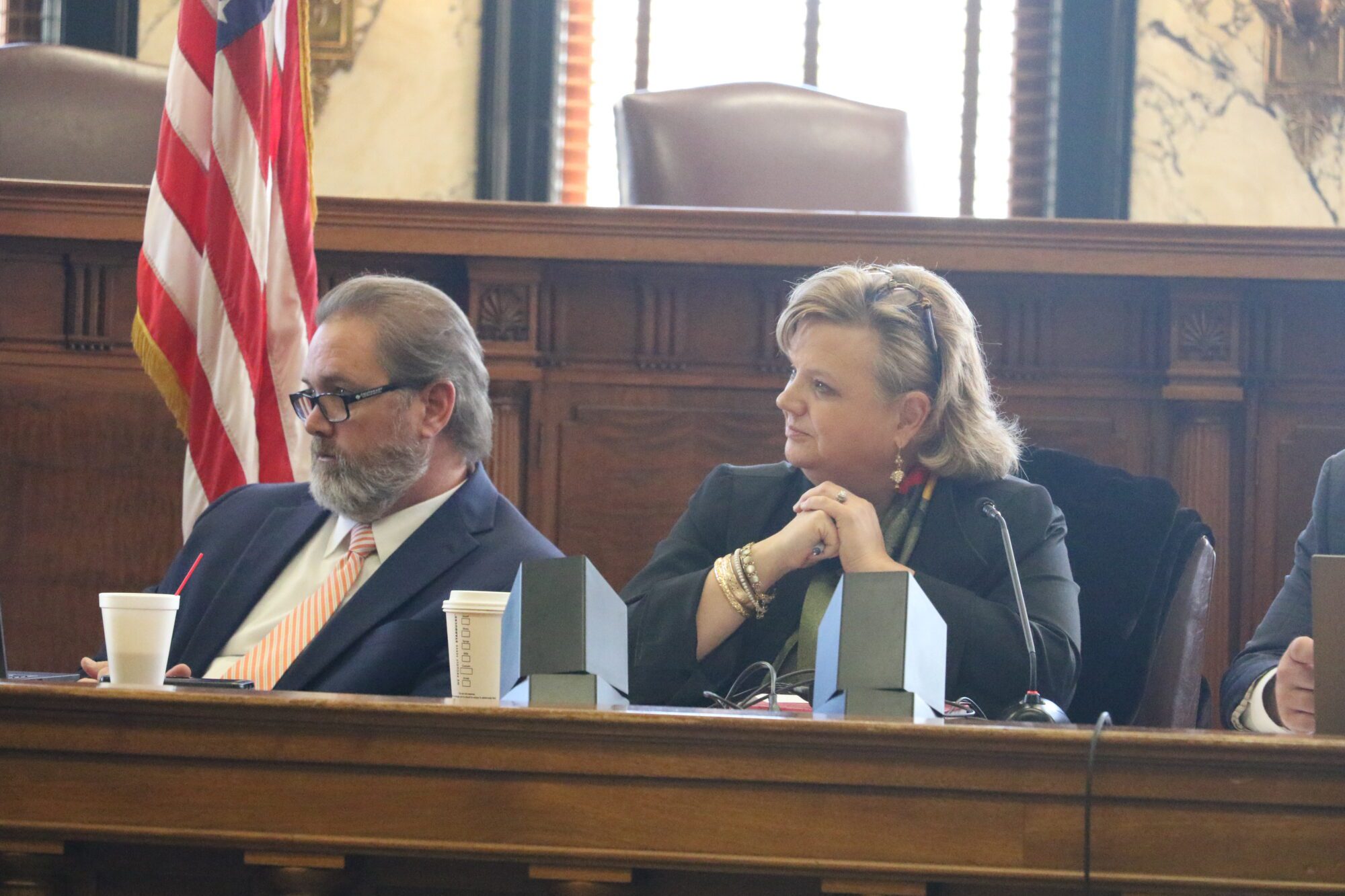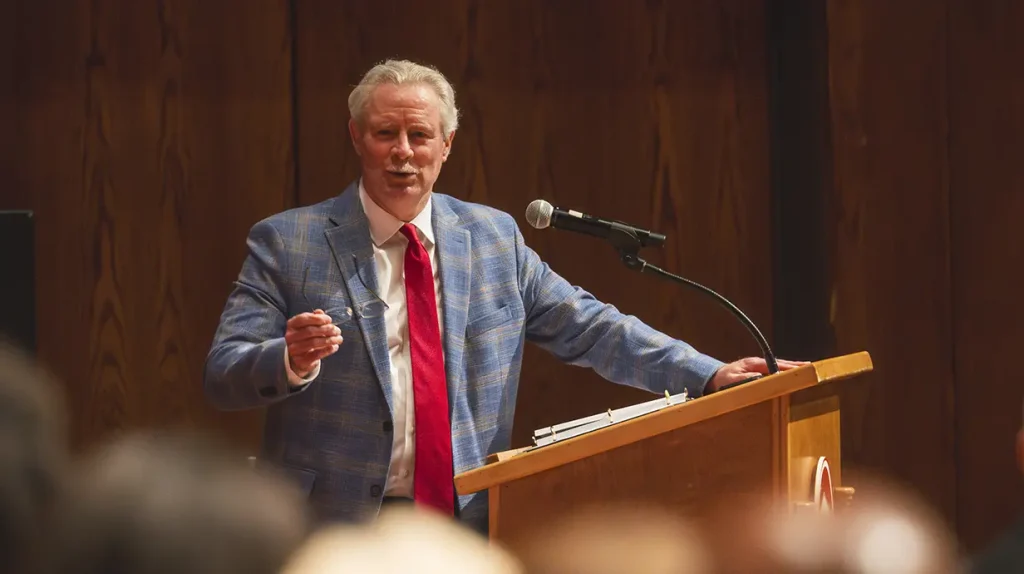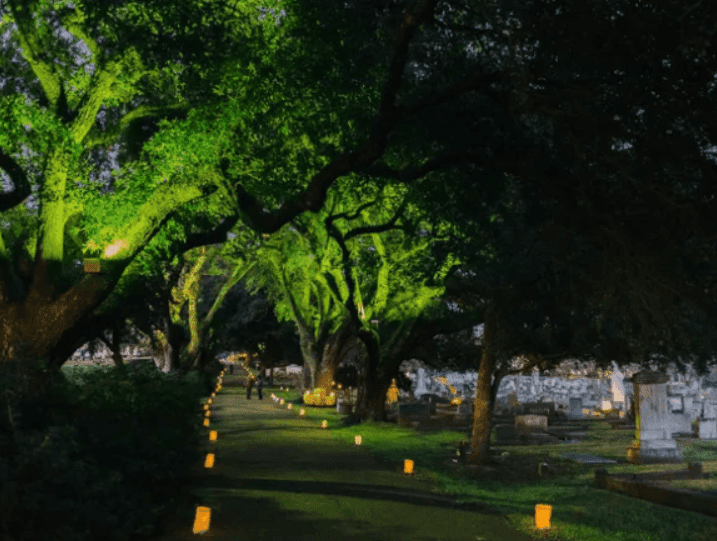
(Photo from Visit Natchez)
- Each November, the Natchez City Cemetery transforms from a resting place into an open-air stage.
There’s something about Natchez that seems to breathe history. Maybe it’s the way Spanish moss drapes from the oaks, or how the Mississippi River curls around the bluff like it’s holding on to every story ever told there. But once a year, those stories rise up and speak again—softly, by candlelight—at Angels on the Bluff.
Each November, the Natchez City Cemetery transforms from a resting place into an open-air stage. The candle-lit walking tour takes visitors along winding paths where actors, dressed in period costume, stand by the graves of real men and women who helped shape the town’s past. The air smells faintly of wax and magnolia leaves, and the glow of the luminaries gives the entire hillside an otherworldly shimmer.
If you’ve ever been, you know it’s hard to explain the feeling. You’re aware that you’re in a cemetery, yet what you experience is less about death and more about life—about how the people who came before us lived, loved, struggled, and triumphed in this corner of Mississippi.
Meet This Year’s “Angels”
The 2025 program sheds light on some new stories, each capturing a distinct piece of Natchez’s rich mosaic. Here are just a few:
First is Colonel Edward Schwartz Allee, born in Natchez in 1908 to Orsino and Eliza Allee, but raised in Kansas City. He was one of those rare spirits whose curiosity reached the skies—literally. After graduating from M.I.T. in 1932 with a degree in aeronautical engineering, he joined the U.S. Army’s Officers’ Reserve Corps and trained at the “West Point of the Air.” Will Godfrey will portray Col. Allee this year, sharing tales of his aerial adventures and the courage that carried him through the earliest years of flight. It’s a reminder that even those who leave Mississippi often carry its grit and grace wherever they go.
Then there’s Frances Johnson Cessor, born in 1834 to Caroline Kyle, a free woman of color. Frances grew up in Kyletown, a neighborhood named after her family’s matriarch, Nancy Kyle. Widowed at forty-two, Frances supported her children by sewing—needle and thread became her lifeline. She represents the untold stories of women who quietly sustained their families and communities through skill, faith, and perseverance. Kristin Hogans will bring Frances to life, weaving in the remarkable legacy of her descendants, including a granddaughter who went on to achieve great things.
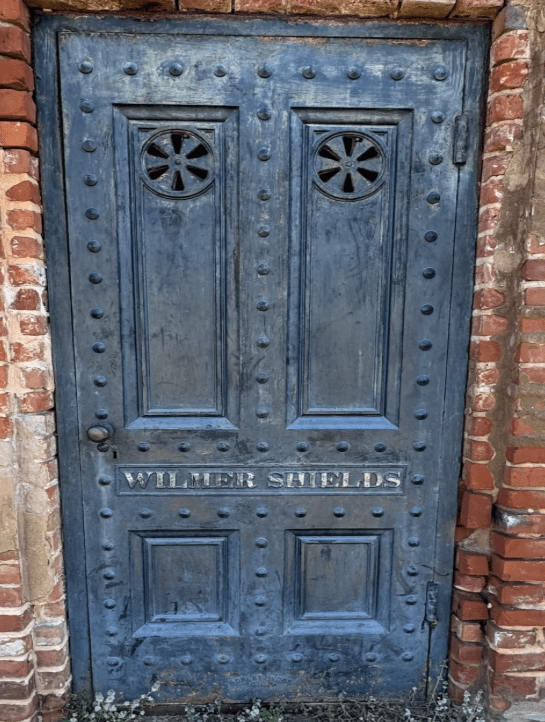
Julia Devereux Ashton Shields was born in 1842 near Maysville, Kentucky, and married Wilmer Shields, a widowed U.S. Navy veteran, in 1865. Her life was marked by both love and loss—widowed before turning forty, she also endured the heartbreak of losing three of her seven children. Yet those who knew her remembered Julia as “a woman of strong character” with “the most generous impulses.” This year, her descendant and local resident, Marsha Colson, will bring Julia’s remarkable story to life.
Veteran storyteller Sam Jones will also return to embody Dr. Frederic Seip, a Pennsylvania native who arrived in the Natchez District around 1803. A physician with both a successful private practice and a deep sense of duty, Dr. Seip volunteered his services for the poor and helped found the Natchez Hospital in 1805. His life was brief—he died at just forty-one—but his compassion continues to echo through time.
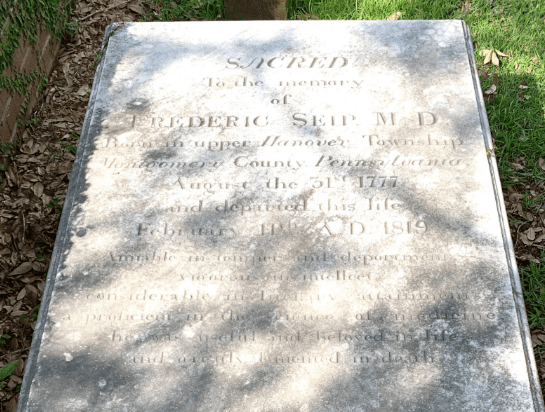
A Night Unlike Any Other
Angels on the Bluff 2025 will be held November 6th through 8th at the Natchez City Cemetery, located at 2 Cemetery Road. Tickets sell out fast every year, and once you’ve been, you understand why.
The event is beautifully orchestrated: groups are shuttled from the Natchez Visitor Center to the cemetery, where guides—often local volunteers—lead guests along paths lined with luminaries. The candlelight flickers against the marble angels and headstones, and as you listen to each story unfold, you realize these aren’t just historical figures—they were neighbors, parents, dreamers, and pioneers.
When I visited years ago, at least a dozen shuttles were running that night—each full of people eager to meet the “angels.” I remember standing beneath a massive live oak, its branches lit from below, and the sound of distant music floated through the air. For a moment, time felt suspended.
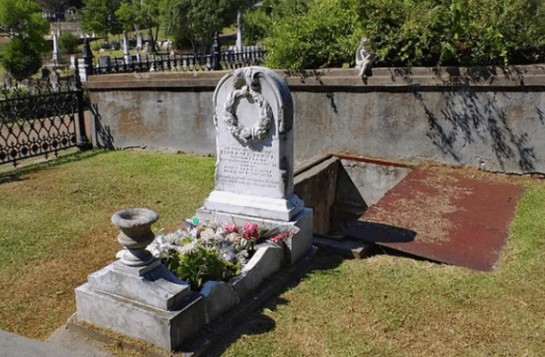
The Legends That Linger
Some of Natchez’s best-known stories are also told in these sacred grounds. There’s Florence Irene Ford, a little girl terrified of thunderstorms. When she died at just ten years old of yellow fever, her grieving mother built a small staircase and window beside her coffin so she could sit with her child during storms. It’s a haunting, tender reminder of a mother’s love that even death couldn’t silence.
And then, of course, the Turning Angel, the graceful marble statue said to watch over five young women killed in the 1908 Natchez Drug Company explosion. Locals swear that when you walk past at night, her eyes seem to follow you. Whether it’s imagination or something more divine, it’s a reminder that stories never truly rest in Natchez—they turn toward us, waiting to be seen.
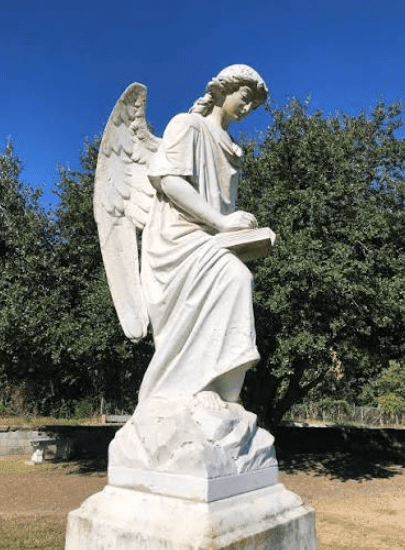
A Walk Through Time
Natchez is the oldest city on the Mississippi River, and its streets hold the weight of centuries. Angels on the Bluff isn’t about ghost stories—it’s about gratitude. It’s a living history lesson wrapped in candlelight and community pride, a way for us to honor the souls who built the town we now enjoy.
If you plan to go this year, take your time walking those winding paths. Listen closely. You might just hear the whispers of Natchez’s past carried in the cool November breeze.
